Explore Montana: 5 towns in 5 Days
Five towns to explore
Like a patchwork quilt, the towns of Montana are pieces of a greater framework. Taken alone, each town is a culture unto itself.
But when you travel Montana and explore the cities and towns that make up the Big Sky state, you get a better sense of what it is that makes Montana such a special place. In any town you're likely to find a Stockman's Bar, a relic of the hardworking cattle industry that helped establish this state's economy, but they might be entirely different from one town to the next. Visit the Stockman's in Missoula, and you're immersed in college culture where football players and co-eds stand shoulder to shoulder in a mass of post-adolescent hormones.
Belly-up to a Stockman's in a town like Twin Bridges, though, and you're likely to find the true character of Montana towns: smalltown folk, easy going and friendly, the same in every town. As a celebration of Montana Living's seventh anniversary this fall, we visit seven Montana towns and give you a snapshot of each one. Like the 50-some issues of Montana Living we've produced in the last seven years, each town has its own identity, but taken as a whole, you get to see a bigger picture of what living in this state means.
— David Reese, editor
BUTTE, MONTANA
If you've ever felt like the traffic, lack of parking and crowds of San Francisco were too much to handle but you love the architecture, cool air and rolling hills - then Butte, Montana, might be just where you belong.
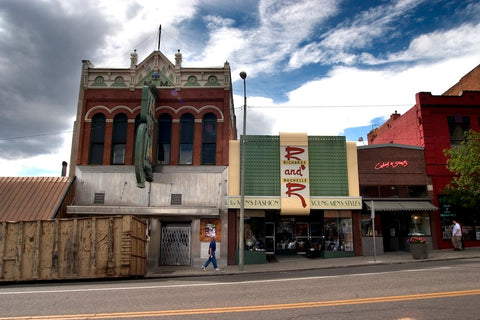
In fact, the town looks so much like San Francisco of the early 1900's that motion picture Director Ron Howard recently scouted the historic "uptown" as a potential location for one of his projects. Once the fourth wealthiest town in the world, during the silver and copper mining boom of the 1920s, Butte is a treasure chest of history, although these days the town more closely resembles the quintessential tumbleweed of a ghost town. A warm wind and the smell of old lumber that trims the doors and windows of the town are your only companions where "Available for Rent" signs far outnumber the actual stores in operation.
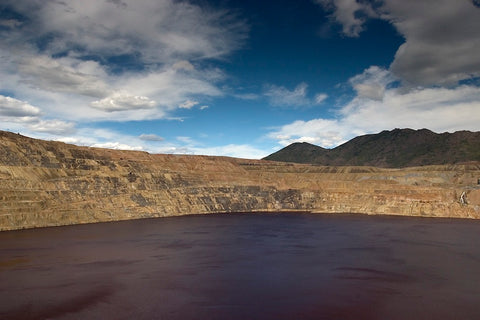
During Butte's heyday though, there must have been as much life in the alleyways as there was on the main streets. Multi-level saloons are in every nook - many of them likely the place where soldiers had their final hoorah before shipping off to fight in the World Wars. When visiting Butte, one detail not to be overlooked are the "ghost signs." "Ghost signs" are signs for businesses that were painted onto buildings long ago as advertisements much like billboards are today. Nearly a century later, the businesses are long gone, but the hand-painted ads touting the businesses still remain. There are dozens of these signs throughout the city, on nearly every brick building, each signed by their creator like works of art. There is no greater impression left by a visit to Butte than that of the mining industry- most notably the Berkley Pit. This is a 1,600-foot gaping hole, over a mile around, gouged into what was once a hillside just outside of historic uptown Butte.
Standing on the platform looking out over the pit, it's hard to believe the crater was manmade, let alone anything less than the impact site of some otherworldly object. The pit has been designated a "Superfund" site by the Environmental Protection Agency which translates into a human and environmental nightmare.
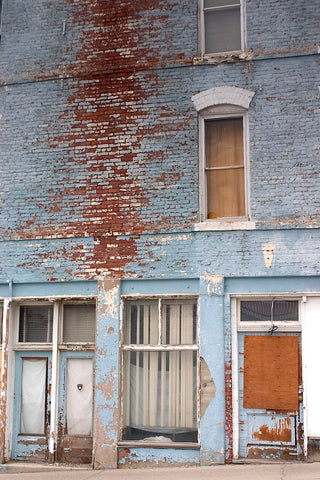
The pollution from the world's largest open-pit copper mine is evident in the form of a deep red run-off that is slowly filling up the hole. Still, Butte is resilient. With the convergence of Interstate 15 and I-90 at the doorstep to the city, there is new life breathing into the lower part of Butte with the emergence of businesses catering to the tourism and travel industries. It's easy to picture that at some point in the future, the historic "uptown" will also have new life.
With affordable real estate (think $500 a month for 3,500 square feet) and gorgeous architecture, the structures are a dream with 14-foot ceilings and classic fixtures commonplace throughout. Butte is a cultural icon that represents the rise and fall common of western boom towns. Its rich and textured history and the somewhat undiscovered nature of it's "ghost town uptown" make it a stop on the map worth exploring.
— Ian Shive
BOZEMAN, MONTANA
If the Rocky Mountains are “the backbone of North America” then towns like Bozeman give the backbone its nerve.
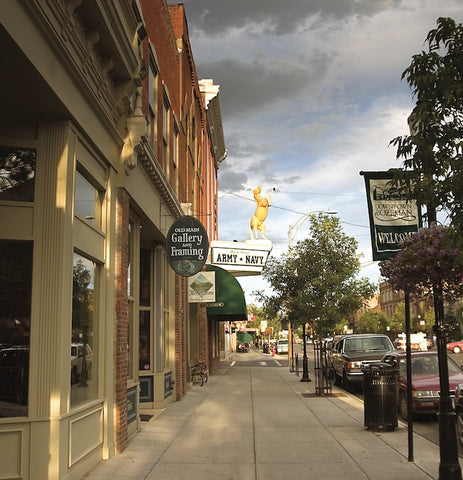
Bozeman is the kind of town where you see a $2,000 bicycle strapped to the roof of a $500 car. Priorities are at a grass roots level, literally. A confluence of agriculture and adventure, the river town of Bozeman sits at the crossroads to the greatest outdoor experiences in the lower 48 states.
Just 90 miles north of Yellowstone National Park, it’s is a place to finish a day in the office and still have enough time to grab a fly rod and head to any one of the three blue ribbon fishing rivers that flow out of the surrounding Rocky Mountains.
If 35-degrees below zero is too cold for you to stand knee-high in glacial melt hoping to hook a puckered up trout, you can always hit one of the two top-notch ski hills – Big Sky or Bridger Bowl - and be up to your waist in fresh powder.
Regardless if you are an avid backpacker or fly fisherman, farmer or ranch hand, Bozeman has a universal appeal. On the historic downtown drag, you can find a classy hardwood floor and halogen lit “bar” specializing in fine wines while only two doors down its all whiskey-and-Coke style at the cowboy-rowdy Crystal Bar.
There are plenty of restaurants with fine fare, and the attention to organic lifestyle is on par with a Los Angeles lifestyle – except here, the mountains aren’t obscured by a layer of smog and this town’s community is one to be sure that never changes.
The town, though, is somewhat struggling with its identity. While trying to upgrade its image, Bozeman toils with the ever-constant battle of economic growth versus small town preservation. While the town hasn’t lost sight of what’s important, more “big block” stores have been introduced to the roster of local coffee houses and fly fishing shops. Trying to salvage some degree of image, the town has enforced an architectural code requiring new businesses to maintain a “Rocky Mountain look” of rock and logs.
Another Bozeman draw: It’s hard to take a bad picture here. The town has become somewhat of an unofficial Mecca to the outdoor photographer community. There is hardly a Patagonia catalogue that doesn’t have at least one photo taken in and around Bozeman – a testament unto itself how the town is dressed. It’s also home to some of the best photographers in the world, perhaps because of the easy access to a variety of outdoor sports and rugged, unrestrained beauty.
The best part of Bozeman are the people. The town is a blend of college students, full time snowboarders (a.k.a. college students), ranchers, professionals and Hollywoodites. Regardless of how you make your living, the town is a relaxed jeans and t-shirt kind of place where being unshaven is considered a plus as people might assume you’ve just descended nearby Mount Blackmore (10,154 feet) and just simply haven’t had time for a shave.
Summitting a good peak is sure to earn you a Moose Drool beer from a new friend you make at the bar ‘cause that’s just the kind of town this is.
BILLINGS, MONTANA
From Black Otter Trail atop the Billings’ Rimrocks, cast your eye to the Yellowstone River and the Big Horn and Pryor mountains to the south, to the Absaroka Beartooth range to the west, and to Pompey’s Pillar to the east.
Soak in the expansive eastern Montana sky above. You’re in the Yellowstone Valley, described by Crow Chief Arapooish as good country, with its temperate climate, clear water, and ample game. “While you are here,” Chief Arapooish said, “you will fare well.”
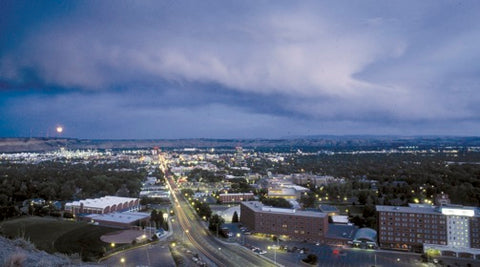
Below you lies Billings, Montana’s largest city,
To explore Billings, go right to its heart – where the city began - historic Montana Avenue. Here, Billings earned its nickname the Magic City, springing up in 1882 with livery stables, Chinese groceries, hotels and railroaders. Today, Montana Avenue is home to antique dealers, design studios, loft apartments, upscale eateries, and Billings’ original library. The library was erected in 1910 as a memorial to Parmly Billings, early resident and son of railroad magnate and city namesake, Frederick Billings, Sr.
The building narrowly escaped the wrecking ball in the 1970s and now houses the Western Heritage Center, a museum dedicated to preserving and interpreting Yellowstone River valley life.
Other downtown treasures include the Alberta Bair Theatre, home to the Billings Symphony and host to world-class talent; the Moss Mansion, designed in 1899 by Henry Hardenburg, architect of New York’s famed Waldorf Astoria hotel; and the Yellowstone Art Museum, the region’s finest art museum, where you can see an array of exhibits from Andy Warhol and Willem DeKoonig to C.M. Russell and Deborah Butterfield.
Brew pubs and independent retailers thrive alongside professional offices in the downtown’s tree-lined streetscape. On summer Saturdays, workdays give way to the Farmer’s Market, a colorful cacophony of music, flowers, Hutterite peas, Laotian eggrolls, old friends, and pickled beets. Downtown is where you’ll find Billings’ finest restaurants: juicy steaks at The Rex, exquisite crème brulee at Walker’s Grill, and Juliano’s fresh seafood (often flown in from Chef Kurokawa’s native Hawaii). If a “hole is the wall” is more your style, try Mamacita’s homemade Mexican fare or wrangle a ribeye at Pay’s Stockyard Café.
To get away from it all, the cottonwoods and aspens along the Yellowstone River in Riverfront Park are hard to beat. This is Billings’ backyard, where kayakers, joggers, and families share the water and open space with beaver, blue heron, and red-wing blackbirds. You can also access the river from a bike path near the Metra, Billings’ venue for big name stars like Cher and George Strait, antique shows, and professional sports.
From her early days as a dusty, raucous railroad town, Billings has grown into a fine city — big enough for urban amenities, small enough for family comfort, with a multi-faceted economy and state-of-the-art medical facilities. Opportunities for exceptional fishing, hiking, skiing and hunting are minutes away.
While rapid development expands the city’s perimeter into prime agricultural areas, and box stores and national chains pressure local merchants, most residents agree with Crow Chief Arapooish. Billings is a good place to earn a living, raise a family, and be a part of a healthy community in a beautiful setting – all cornerstones of the good life in Montana.
— Virginia Bryan
HELENA, MONTANA
The “Queen City” of Helena stretches across a wide valley that is bordered by the Missouri River and surrounded by several of the Rocky Mountain’s smaller but stunning ranges.

Among the spectacular views, vivid sunsets and endless sight-seeing and recreation options, the capital city of Montana remains the hub of state operations. Helena has been an ever-growing city since its first days as a mining town in 1864. Its blend of history and culture, industry and government make it unique for a quietly-growing town nearing 30,000 people. Within the city limits, any visitor can explore Helena’s charming historical neighborhoods and downtown walking mall. The remains of the once-booming mining culture mingle with the modern buildings of the capital city. Places like Reeder’s Alley, Last Chance Gulch and the restored Governor’s mansion offer a window into Helena’s gold rush era of the mid 1800s.

St. Helena Cathedral in Helena, Montana. (David Reese photo/Montana Living)
While the town is historically captivating and culturally diverse, it is Helena’s surrounding area that is truly amazing also. Local families, tourists and college students can all be found taking full advantage of the Missouri’s waters. With summer temperatures reaching into the 90’s, floaters, fishermen, cliff-jumpers and anyone with a fondness for water sports practically live on the river or any of the three lakes nearby. For adventurers who would rather hike, bike, 4x4 or horseback ride, recreation opportunities can be found in every direction from town. The southern route leads to the Helena National Forest and Elkhorn Wilderness Complex. West-bound travelers can explore the views from the top of McDonald Pass or take a northwest road to Great Divide Ski Area and the small ghost town of Marysville. Stay hot on the trail of the Lewis and Clark Expedition and fish, bike, hike and drive your way north to Great Falls. The Canyon Ferry Reservoir lies to the east, as does the small community of Townsend, known for its incredible hunting and great spot on the edge of the lake.
While Helena is not in the center of the state, its location is central to most of Montana’s major cities. Butte, Great Falls, Bozeman and Missoula can all be reached within one to two hours; only Billings and Kalispell require a bit more driving time. Helena thrives as the geographic and political center of Montana and its attractions, opportunities and culture continue to grow with the town.
TWIN BRIDGES, MONTANA
Twin Bridges, Montana, is like most other Montana ranching communities: a long main street, with side streets that connect out into the vast, surrounding farmland.
The town in Madison County is where the community of farmers, ranchers, bankers and bakers comes together, where those roads that are like spokes in a wheel come to a center. Twin Bridges is in the heart of ranching in southwest Montana. The river winds through town, and small shops occupy glass-fronted windows. On a summer day, kids can be seen riding their bikes through town, fishing poles strapped to their backpacks; drift boats sit parked outside fishing shops, waiting for the next batch of clients to experience the world-class fly fishing that awaits nearby.
Since 1929, Winston has made some of the finest fly rods in the world. For a number of years, the company was based in San Francisco, but since 1976, it’s been in the small town of Twin Bridges, pretty much within casting distance of the Beaverhead, Ruby, Jefferson and Big Hole rivers.
The company celebrated its 75th anniversary this summer, with as much fanfare as a county fair among the town’s 400 residents.
“I always wondered where the other bridge was in Twin Bridges,” said David Ondaatje, owner of R.L. Winston since 1991. “It may seem a bit esoteric, but I believe we are the other bridge that connects Twin Bridges with the rest of the world.”
As the sport of flyfishing grows, so has Winston Rod Co., which this year saw a record year in sales of its high-end fishing rods. “It couldn’t be more fitting,” Winston CEO and president Woody Woodard said.



